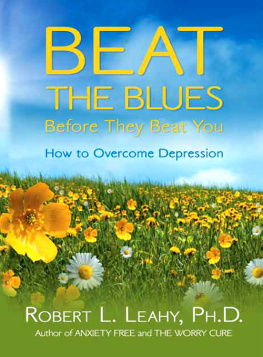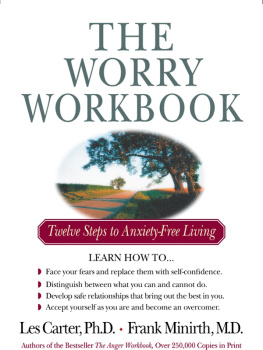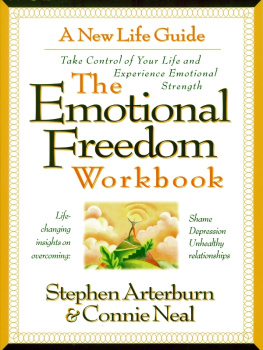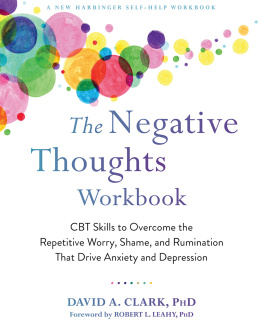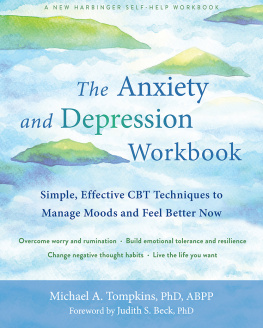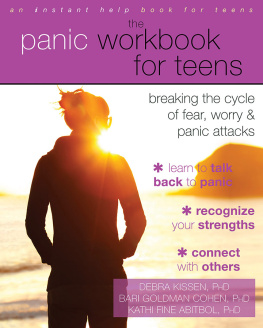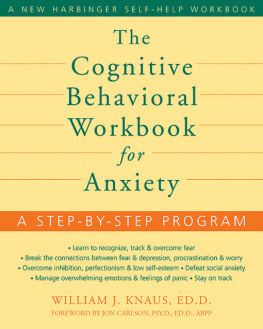Robert L. Leahy - Dont Believe Everything You Feel: A CBT Workbook to Identify Your Emotional Schemas and Find Freedom from Anxiety and Depression
Here you can read online Robert L. Leahy - Dont Believe Everything You Feel: A CBT Workbook to Identify Your Emotional Schemas and Find Freedom from Anxiety and Depression full text of the book (entire story) in english for free. Download pdf and epub, get meaning, cover and reviews about this ebook. year: 2020, genre: Religion. Description of the work, (preface) as well as reviews are available. Best literature library LitArk.com created for fans of good reading and offers a wide selection of genres:
Romance novel
Science fiction
Adventure
Detective
Science
History
Home and family
Prose
Art
Politics
Computer
Non-fiction
Religion
Business
Children
Humor
Choose a favorite category and find really read worthwhile books. Enjoy immersion in the world of imagination, feel the emotions of the characters or learn something new for yourself, make an fascinating discovery.
- Book:Dont Believe Everything You Feel: A CBT Workbook to Identify Your Emotional Schemas and Find Freedom from Anxiety and Depression
- Author:
- Genre:
- Year:2020
- Rating:5 / 5
- Favourites:Add to favourites
- Your mark:
- 100
- 1
- 2
- 3
- 4
- 5
Dont Believe Everything You Feel: A CBT Workbook to Identify Your Emotional Schemas and Find Freedom from Anxiety and Depression: summary, description and annotation
We offer to read an annotation, description, summary or preface (depends on what the author of the book "Dont Believe Everything You Feel: A CBT Workbook to Identify Your Emotional Schemas and Find Freedom from Anxiety and Depression" wrote himself). If you haven't found the necessary information about the book — write in the comments, we will try to find it.
Robert L. Leahy: author's other books
Who wrote Dont Believe Everything You Feel: A CBT Workbook to Identify Your Emotional Schemas and Find Freedom from Anxiety and Depression? Find out the surname, the name of the author of the book and a list of all author's works by series.
Dont Believe Everything You Feel: A CBT Workbook to Identify Your Emotional Schemas and Find Freedom from Anxiety and Depression — read online for free the complete book (whole text) full work
Below is the text of the book, divided by pages. System saving the place of the last page read, allows you to conveniently read the book "Dont Believe Everything You Feel: A CBT Workbook to Identify Your Emotional Schemas and Find Freedom from Anxiety and Depression" online for free, without having to search again every time where you left off. Put a bookmark, and you can go to the page where you finished reading at any time.
Font size:
Interval:
Bookmark:

In Dont Believe Everything You Feel , author Robert Leahy provides a step-by-step guide to accepting emotions, rather than scrambling to change them; the use of adaptive, rather than unhelpful, emotional coping strategies; and an orientation to valued living. If you are experiencing emotional challengeswhether depression, or anxiety, or anger, or something elseyoull find this book to be an invaluable resource for helping to navigate those challenges.
David F. Tolin, PhD, ABPP , author of Face Your Fears
While animals can show all kinds of emotions that have a lot of overlap with us, humans can clearly think in a range of complex and new ways that other animals cant. While these thinking competencies make us unique, they can also drive us into anxiety and depression. In his new and deeply insightful book on the link between thinking and feeling, internationally renowned cognitive therapist Robert Leahy guides us skillfully through the minefields and problematic relations between our thoughts and feelings. He identifies clearly how our interpretations and thoughts about situations, and feelings themselves, can make us feel better or worse, engage with them, or try to avoid them. Packed with years of insightful clinical experience, this is a wonderful guide for anyone interested in the relationship between thinking and feeling, and how to get ones mind on a more balanced footing.
Paul Gilbert, PhD, FBPsS, OBE , author of Living Like Crazy and The Compassionate Mind
Leahy leads us through numerous clinical scenarios to demonstrate the emotional traps people fall into that get them stuck, and addresses nuanced aspects of emotions, including worry and rumination; envy, shame, and hopelessness; ambivalence; and effectively recognizing and responding to emotions in others.
Through numerous self-assessments and exercises, Leahy helps the reader recognize that a rich and meaningful life includes experiencing a full range of emotions, including painful ones. In explicating the centrality of emotions to the human experience, Leahy both validates his readers and invites them to keep moving forward, transcending emotion-based perceived limitations and instead using emotions to increase awareness of priorities and pursue meaningful goals.
Jill Rathus, PhD , professor of psychology at LIU Post; codirector of Cognitive Behavioral Associates in Great Neck, NY; and coauthor of DBT Skills Manual for Adolescents and Dialectical Behavior Therapy with Suicidal Adolescents
To be human is to experience a tapestry of emotions. Now, for the first time, internationally renowned author and clinical psychologist Robert Leahy offers an inspiring workbook based on his unique theory of emotion. His integration of cognitive-behavioral and acceptance perspectives is a refreshing departure from conventional therapies that take a more pathogenic view of emotion. This workbook is packed full of wisdom, guidance, intervention strategies, and step-by-step exercises and worksheets that will transform a broad range of negative and distressing emotions. Written with conviction, compassion, and encouragement, readers will find the many case examples engaging and illuminating. Leahy gently, but persuasively, guides the reader through a process of discovery and emotional transformation that enables individuals to better themselves, enrich their relationships, and experience what it means to be authentically alive.
David Clark, PhD , professor emeritus in the department of psychology at the University of New Brunswick
Robert Leahy is one of most influential clinicians in the field of psychology today. His latest book, Dont Believe Everything You Feel , is based on the principles of cognitive behavioral therapy (CBT) as well as emotional schema therapy, and details an innovative way of coping with difficult feelings. Case examples and exercises found within illustrate how to live a full life by allowing the experience of a full range of emotions. I highly recommend this accessible and inspiring self-help book!
Sabine Wilhelm, PhD , professor at Harvard Medical School, and chief of psychology at Massachusetts General Hospital
Emotions define us as a human species. Robert Leahys book, Dont Believe Everything You Feel , holds the key to understanding the secret of living a human life with its confusing experiences ranging from joy and happiness to depression and anxiety. This superb text outlines his influential emotional schema therapy approach using cognitive and behavioral principles. Written by a master clinicianone of the most influential authors and foremost leaders of CBTthis text is destined to become a classic. Clearly a must-read for any clinician, trainee, client, and anybody interested in emotions and psychotherapy.
Stefan G. Hofmann, PhD , professor in the department psychological and brain sciences at Boston University
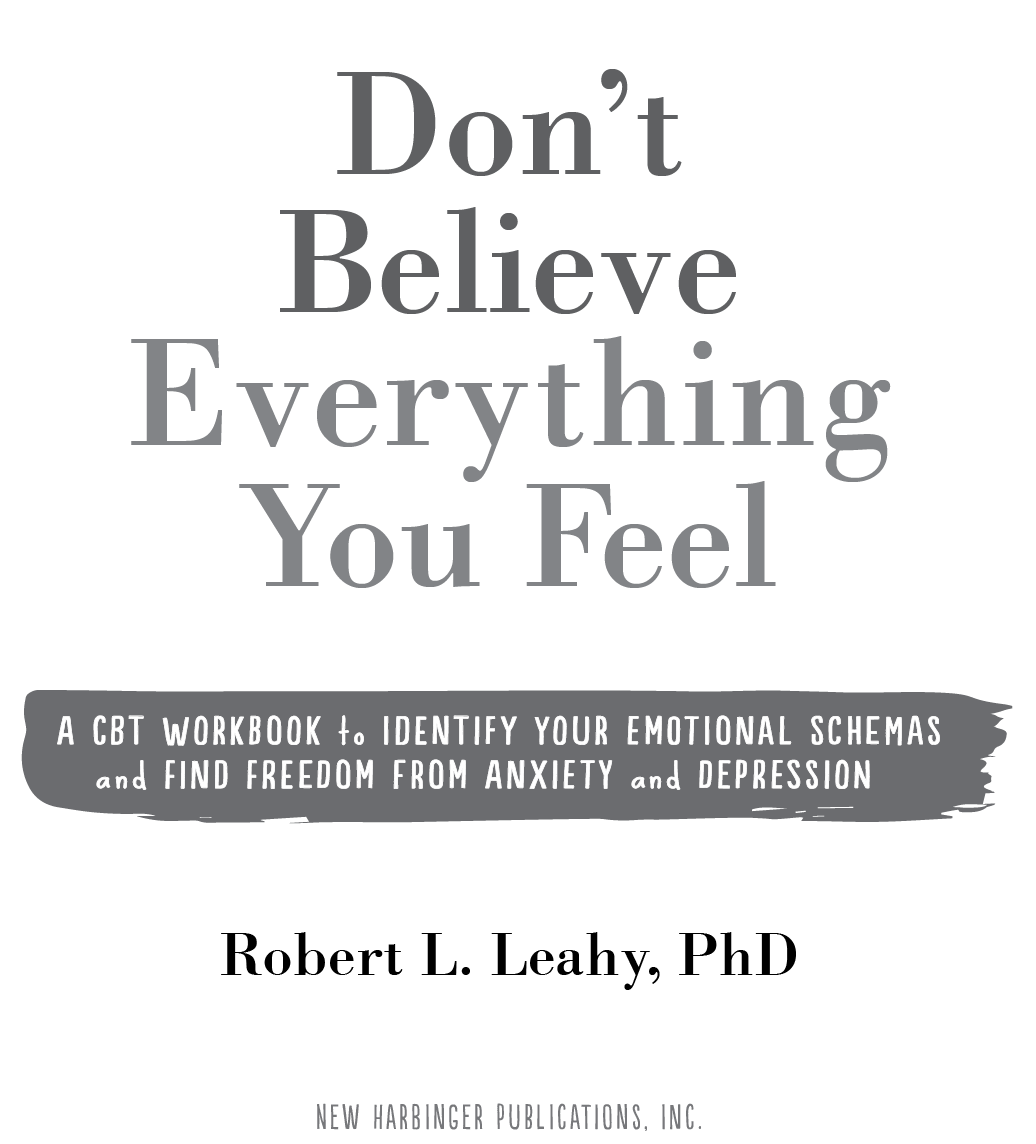
Publishers Note
This publication is designed to provide accurate and authoritative information in regard to the subject matter covered. It is sold with the understanding that the publisher is not engaged in rendering psychological, financial, legal, or other professional services. If expert assistance or counseling is needed, the services of a competent professional should be sought.
Distributed in Canada by Raincoast Books
Copyright 2020 by Robert L. Leahy
New Harbinger Publications, Inc.
5674 Shattuck Avenue
Oakland, CA 94609
www.newharbinger.com
Daily Emotion Log from Cognitive Therapy Techniques, 2nd Edition by Robert Leahy. Copyright Guildford Press 2017. Used by permission.
Cover design by Sara Christian
Acquired by Ryan Buresh
Edited by Marisa Solis
All Rights Reserved
Library of Congress Cataloging-in-Publication Data on file
To Helen
Contents
Chapter 1:
What Are Emotions?
What is the difference between you and a robot?
Think of all the things that robots can do. They can cook your dinner, clean your floor, answer your phone, roll into a dangerous building and extract a bomb, drive your car, deliver your Amazon packages. They can beat you in chessover and overeven if youre a world-class chess champion. They can solve just about any mathematical problem you present to them, and now robots are even used in therapy with autistic children.
So, what do you have that a robot doesnt?
Feelings.
Robots dont have the sense of anxiety, desire, sadness, anger, excitement, or loneliness that you may feel on any given day.
If you are alive, then you have feelings. And if you are conscious, you also have sensations, pain, and awareness that something is going on.
The Man Who Was Locked Inside Himself
Let me tell you a true story of someone whuo was completely paralyzed but still aware of what was going on around him. In 1995, the editor of the French magazine Elle, Jean-Dominique Bauby, suffered a stroke that resulted in a coma. Twenty days later he came to consciousness, but he was completely locked inside his bodyunable to move, unable to speakfeeling helpless but aware of what was around him.
Remarkably, Bauby was still able to move his left eyelid. This led him to think about the possibility of dictating a journal about his experience. He worked out a system with his assistant that allowed him to blink when he noticed specially displayed letters of the alphabet that he wanted to record. In the months that followed, he dictated 200,000 eye blinks, which resulted in a book about his experience: The Diving Bell and the Butterfly.
Font size:
Interval:
Bookmark:
Similar books «Dont Believe Everything You Feel: A CBT Workbook to Identify Your Emotional Schemas and Find Freedom from Anxiety and Depression»
Look at similar books to Dont Believe Everything You Feel: A CBT Workbook to Identify Your Emotional Schemas and Find Freedom from Anxiety and Depression. We have selected literature similar in name and meaning in the hope of providing readers with more options to find new, interesting, not yet read works.
Discussion, reviews of the book Dont Believe Everything You Feel: A CBT Workbook to Identify Your Emotional Schemas and Find Freedom from Anxiety and Depression and just readers' own opinions. Leave your comments, write what you think about the work, its meaning or the main characters. Specify what exactly you liked and what you didn't like, and why you think so.




